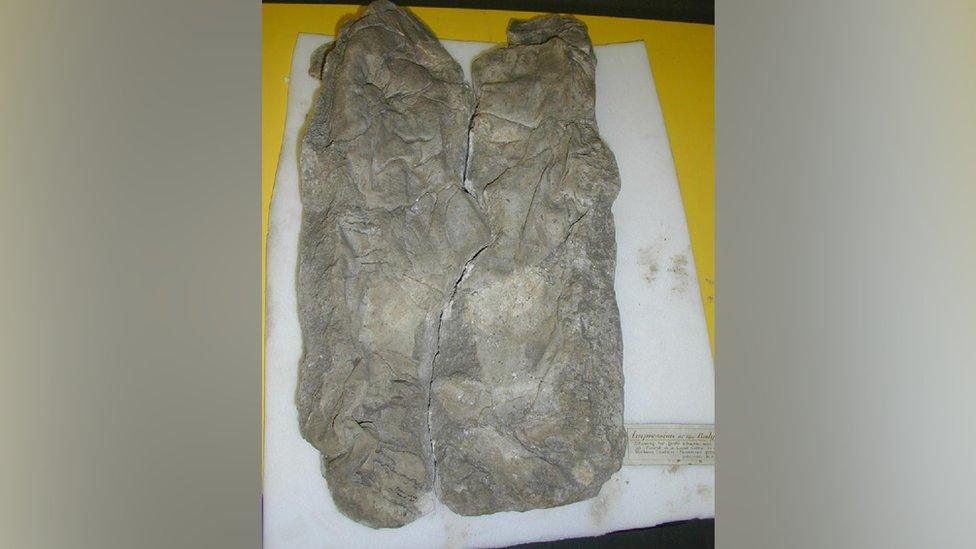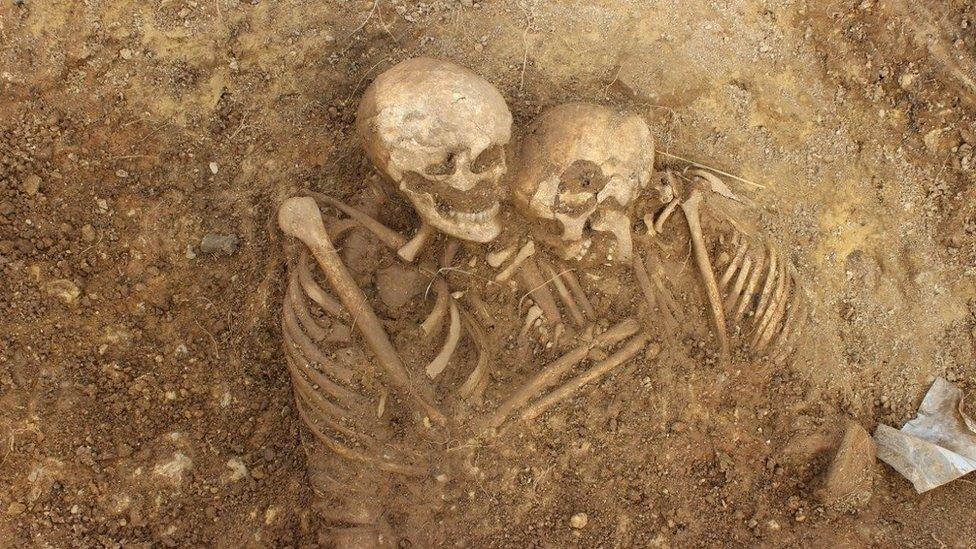Details of 'unusual' Roman burial ritual revealed by 3D scans
- Published

The York archaeologists are the first to use 3D scanning to study gypsum burial casings
Details of a "intriguing and unusual" Roman burial ritual have been revealed by 3D scans.
Archaeologists at the University of York said cutting-edge technology had allowed them to examine in "stunning" clarity the grave of a British family who died nearly 2,000 years ago.
Liquid gypsum - a mineral used to make types of cement and plaster - had been poured over the bodies before burial.
As the gypsum hardened, it formed a cast of the dead and their clothing.
Archaeologists do not fully understand why some Romans poured the mineral into coffins, but the practice preserves evidence of materials that would not otherwise have survived.
Gypsum burials have been found elsewhere in Europe and North Africa but were particularly notable in Britain, with at least 45 recorded in the York area since the late 19th Century.
York's researchers were the first in the world to study such graves with 3D scanning, according to the university.
They team scanned the gypsum cast of a family of two adults and an infant who were buried together after dying at the same time.
Prof Maureen Carroll, the university's chair of Roman archaeology, said: "The contours of the three individuals in the gypsum can be seen with the naked eye, but it is difficult to make out the relationship of the bodies to each other and to recognise how they were dressed or wrapped. The resulting 3D model clarifies these ambiguities in stunning fashion."
'Poignant family tragedy'
The scans revealed that, in preparation for burial, all three bodies were wrapped from head to toe in shrouds and various textiles.Intricate details such as ties used to bind the burial shroud over the head of one of the adults and bands of cloth used to wrap the infant were clearly visible.
"The 3D images allow us to witness a poignant family tragedy almost 2000 years after it occurred, reminding us not only of the fragility of life in antiquity, but also the care invested in the interment of this group of people," Prof Carroll said.

The Yorkshire Museum in York 16 Roman gypsum burial casts in its collection
Gypsum burials are thought to have been a custom associated with wealthy people. Traces of aromatic Mediterranean and Arabic resins were found on other York graves previously studied by researchers, suggesting the use of costly and exotic substances available only to the elite.
The team, who are presenting their findings at the York Festival of Ideas later, are now hoping to secure funding to scan all of York's gypsum casings.
Sixteen gypsum casings found in York are held by the Yorkshire Museum, the largest such collection in the UK.

Follow BBC Yorkshire on Facebook, external, Twitter, external and Instagram, external. Send your story ideas to yorkslincs.news@bbc.co.uk or send video here.
Related topics
- Published13 March 2023

- Published27 February 2015
